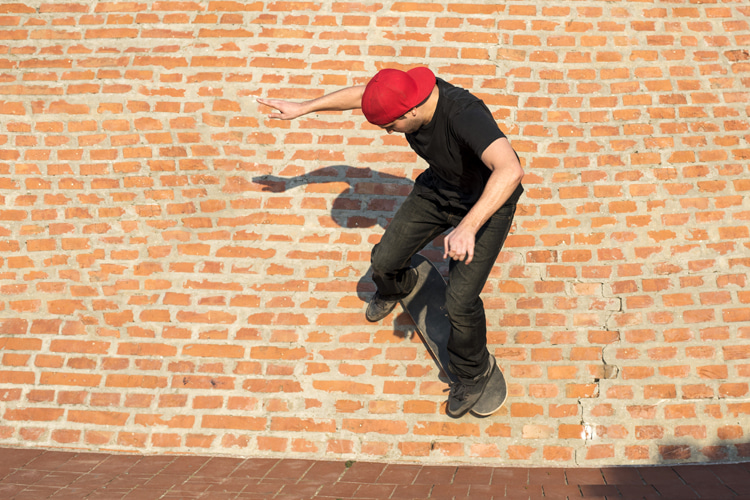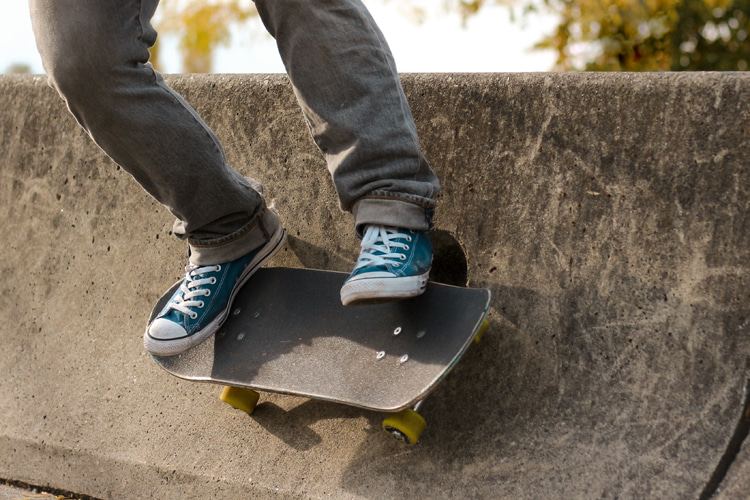Riding a wall on your skateboard can be intimidating. Learn how to wallride properly and safely.
The wallride is not a standard skateboarding trick - it is more like a move or maneuver that defies the Laws of Gravity.
Your body will be parallel to the ground; your board will be perpendicular to the ground.
The only thing it has in common with typical tricks that skaters perform on flat surfaces or obstacles is that it requires a lot of practice, confidence, and commitment.
If you're getting into wallrides for the first time, the first thing you should do is find a wall with a subtle slant to help you get to the vertical surface.
Alternatively, you can try it on jersey barriers or steep quarter pipes because of the transition on the bottom that helps you push into the vertical wall.
In a wallride, the back foot does pretty much most of the work.
You'll need to be comfortable with the kick-turn and the ollie before trying to ride your skateboard at a 90-degree angle to the ground.

Attacking the Wall
The angle of attack/approach is critical and will determine the quality, speed, and length of the wallride.
The more straight you go, the harder it'll be. If you're going for it parallel to the wall, it won't help either.
The easiest way to get into the wallride is by attacking the wall at around 45 degrees.
Then, you should lean hard to the toeside and, when the nose of the board makes contact with the wall, adjust your body and smack your back wheel into the hard surface.
Before making the first contact with the wall, the tail of the skateboard should be scraping the ground.
Ideally, you should try to maximize wallride time by driving your body weight up the wall for as long as you possibly can.
Nevertheless, you don't want to stall at the top of the wall and land primo.
The goal is to manage your momentum and speed for as long as possible and then keep your front truck lower than your back truck.
What this will do is allow you to make a comfortable descent before pressing down on your tail and letting the edge of the board's nose drag you out of the move.
Alternatively, you can force an ollie - while wall riding - to pop you out of the vertical surface and land on your four wheels.
The most common version of the maneuver is the backside wallride - a frontside wallride is, in most cases, a much harder move.
Backside Wallride 101
Time to get up on a wall with no transition.
- Push on your skateboard at medium speed;
- Aim the board at the vertical wall at a 45-degree angle;
- Steer the board a bit and ollie/jump toward the wall at an angle;
- Throw your weight onto the wall, making sure your front foot is really loose;
- Put your hand(s) on the wall if it feels right and comfortable;
- As you reach the apex, start turning the board around;
- As you're coming down, put your weight on the heelside of the tail;
- Bring the skateboard down while still leaning on your heels;
- Push your front foot to scrap the nose of the board on the ground;
- Level the skateboard out and ride away;
Remember to keep the pressure on your back heelside all the time.
If you're practicing it for the first time, choose a smooth wall instead of a brick, rough, or irregular, straight surface.
Also, make sure you jump - not bash - onto the wall.
